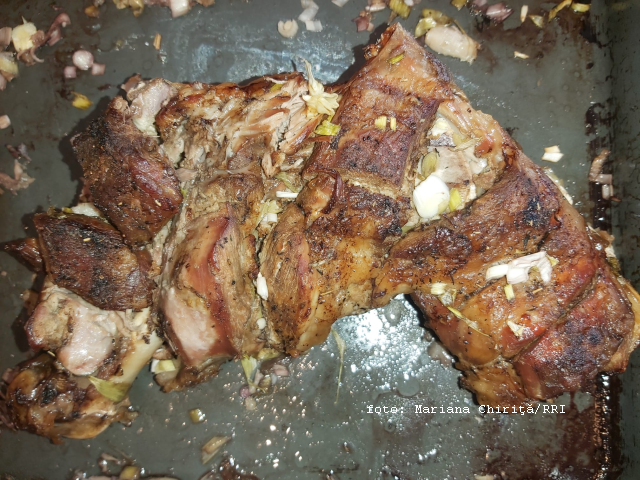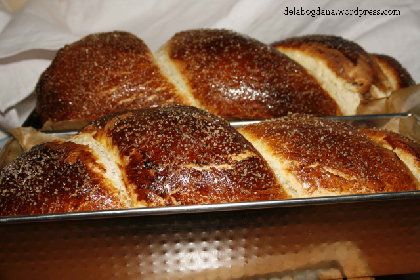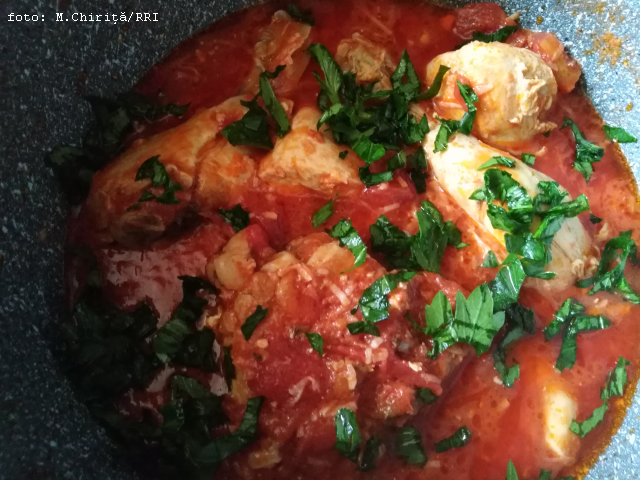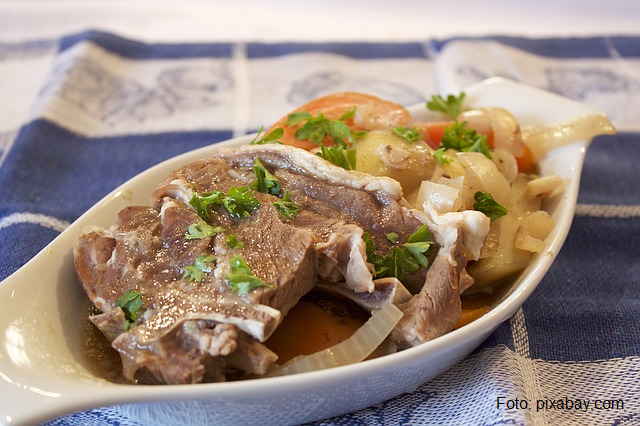Pig Lard
In traditional households, lard is obtained around Christmas, because that is when people slaughter the pigs they raise in their households. It is used in a wide array of applications. It is used for frying things, since it obviously predates the appearance of vegetable oil, a product of the industrial era in these parts. It is also used in making certain kinds of dough, and also as a preserver, as people keep pieces of fried meat in lard.

Ștefan Baciu, 20.01.2019, 14:35
In traditional households, lard is obtained around Christmas, because that is when people slaughter the pigs they raise in their households. It is used in a wide array of applications. It is used for frying things, since it obviously predates the appearance of vegetable oil, a product of the industrial era in these parts. It is also used in making certain kinds of dough, and also as a preserver, as people keep pieces of fried meat in lard.
Lard is made in the home from fatback. It is sliced or cubed and put in cast iron vessels, such as Dutch ovens. Over very low heat, the fatback starts oozing out the lard. As the fat melts, more fatback can be added, and even slices of bacon. When the lard is cooked out, you may leave the cracklings to cook further until they start browning. Then strain the lard out in the jars you will keep it in, taking care not to crack them from the heat. Traditionally, the cracklings are kept in the lard they yielded. Keep the jars in a cool place. People eat the cracklings with polenta, fried eggs and cheese. Another thing they do with their cracklings is to put them through the meat mincer, about half a kilo, along with one onion, mixing well, then seasoning with black pepper and hot paprika. The resulting paste is used as a spread for toast, served with raw onion or dill pickles.
Of course, bear in mind, this type of diet was is the diet of farmers doing hard physical work all day, in case you were shocked at the saturated fat content of such a combination. Romanian cuisine preserves well many such dishes and preparations that are very heavy in saturated fats, which are obviously associated with people who live in villages and do farm work. Think of it as a sort of soul food.
At the same time, don’t think that these food traditions have turned Romania in some sort of heart attack bonanza. Bear in mind that many of the Romanians in the countryside who eat such heavy food often also follow closely the traditions of fasting during holidays, and observe Lent and Christmas Fast, when they don’t eat even dairy products (which admittedly can be very fatty sometimes). In fact, Christian Orthodox fasting forbids any food of animal origin altogether, except for special days when exemptions for fish come into effect. This results in traditional Romanian cuisine having a wonderful array of vegetarian dishes of a staggering variety, if one digs deep enough. The best place to have excellent such food and to learn recipes are monasteries, where the monks by definition follow every single fasting day.
Also, even though the population of Europe has been getting fatter, and Romania is no exception, people here have also latched on very well to new healthy eating trends, especially in cities. Therefore let’s agree to call this edition of the Cooking Show a documentary edition. (Please enjoy lard responsibly!)






























